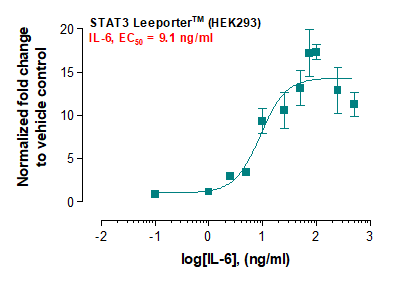Phospho-c-Cbl (Tyr700) (Clone: E1) rabbit mAb FITC conjugate

Fig-1: Flow cytometric analysis of C6 cells cell treated with imatinib and unstained as negative control (blue) or treated with imatinib (red) or with pervanadate (green) and stained using Phospho-c-Cbl (Tyr700) FITC conjugated antibody CblY700-E1.
Roll over image to zoom in
Shipping Info:
For estimated delivery dates, please contact us at [email protected]
| Format : | Purified |
| Amount : | 100 Tests |
| Isotype : | Rabbit IgG1k |
| Content : | 1X PBS, 0.09% NaN3, 0.2% BSA |
| Storage condition : | Store at 2-8°C. Avoid repeated freeze and thaw cycles. |
| Alternative Name : | E3 ubiquitin-protein ligase CBL, Casitas B-lineage lymphoma proto-oncogene, Proto-oncogene c-Cbl, RING finger protein 55, RING-type E3 ubiquitin transferase, Signal transduction protein CBL, CBL2, RNF55 |
| Immunogen Information : | A synthetic phospho-peptide corresponding to residues surrounding Tyr700 of human phospho c-Cbl |
The c-Cbl (Casitas B-lineage Lymphoma) proto-oncogene is a ubiquitously expressed cytoplasmic adaptor protein that contains multiple functional domains, including an amino-terminal tyrosine kinase-binding (TKB) domain, a RING finger motif, and a proline-rich region. The TKB recognizes phosphorylated tyrosines on activated receptor tyrosine kinases (RTKs) and on other nonreceptor tyrosine kinases, while the RING finger motif recruits ubiquitin-conjugating enzymes. These two domains are primarily responsible for the ubiquitin ligase activity of c-Cbl and downregulation of RTKs (1). The proline-rich region contains 14-3-3 protein-binding and SH3 domain-binding motifs. c-Cbl is phosphorylated at Y700, Y731, and Y774 by Syk- and Src-family kinases after the stimulation of some integrins and a wide variety of receptors for immunoglobulins, antigens, hormones, growth factors, and cytokines. Phosphorylated Y774 interacts with the SH2 domain of Crk (1,2). The c-Cbl adapter protein is expressed in the cytoplasm in all tissues, with especially high levels of expression in hematopoietic cells (3,4). Through its many functional sites, c-Cbl plays key roles in the positive and negative regulation of vital cell functions, including T Cell Receptor-mediated cellular immune responses. In human cancer tissues, c-Cbl is frequently tyrosine-phosphorylated in a tumor-specific manner (5).
For flow cytometric staining, the suggested use of this reagent is 5 µL per million cells or 5 µL per 100 µL of staining volume. It is recommended that the reagent be titrated for optimal performance for each application. See product image legends for additional information.(0.5mg/ml, more than 200 western blots)
For Research Use Only. Not for use in diagnostic/therapeutics procedures.
|
There are currently no product reviews
|





















.png)













